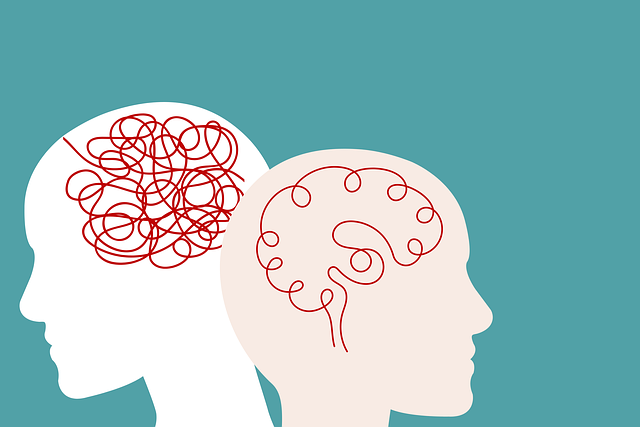Public awareness campaigns for Lafayette Sexual Dysfunction Therapy (LSDT) are key to educating communities about mental wellness and sexual health. By integrating educational components like Social Skills Training, Mood Management, and Mental Wellness Journaling, these campaigns empower individuals to understand their bodies, emotions, and behaviors, fostering self-awareness and self-care. Success relies on understanding target audiences' specific needs, using personal storytelling to reduce stigma, and engaging communities through Trauma Support Services, workshops, social media conversations, and events. Incorporating cultural sensitivity ensures inclusive messaging that respects diverse sexual identities. Measuring campaign impact involves assessing public perception, knowledge, and behavior changes related to LSDT, with tools like pre/post-campaign surveys, tracking therapy inquiries/appointments, and evaluating burnout prevention efforts.
Public awareness campaigns play a pivotal role in shaping community health, with Lafayette Sexual Dysfunction Therapy at the forefront of this initiative. This article delves into the art and science of crafting impactful messages that educate and empower individuals. We explore strategies to navigate sensitive topics, such as sexual health, while addressing societal barriers. By understanding the public’s needs, designing engaging campaigns, and measuring their effectiveness, we can foster positive change. Join us as we uncover key insights for successful Lafayette Sexual Dysfunction Therapy awareness initiatives.
- Understanding Public Awareness: The Role of Education in Community Health
- Designing Effective Campaigns: Strategies for Engaging and Empowering Communities
- Overcoming Barriers: Addressing Sensitivity and Stigma in Sexual Health Discussions
- Measuring Impact: Evaluating the Success of Public Awareness Campaigns for Sexual Dysfunction Therapy
Understanding Public Awareness: The Role of Education in Community Health

Public awareness campaigns are instrumental in educating communities about various health issues, including mental wellness and sexual dysfunction, such as Lafayette Sexual Dysfunction Therapy. Understanding public awareness involves recognizing that education is a powerful tool for promoting community health. By integrating educational components into these campaigns, individuals can gain knowledge about their bodies, emotions, and behaviors, leading to improved self-care and overall well-being.
In the context of mental wellness, activities like Social Skills Training and Mood Management techniques can be effectively communicated through such campaigns. Encouraging people to engage in Mental Wellness Journaling Exercises provides them with practical guidance for tracking moods, identifying triggers, and implementing coping strategies. This proactive approach fosters self-awareness and empowers individuals to take charge of their mental health, creating a more resilient community.
Designing Effective Campaigns: Strategies for Engaging and Empowering Communities

Designing effective public awareness campaigns requires a deep understanding of the target audience and their unique needs. For instance, when addressing sensitive topics like Lafayette Sexual Dysfunction Therapy, it’s crucial to create an inclusive environment that encourages open dialogue. This involves employing strategies such as personal storytelling, which can help break down stigma and foster empathy within communities.
Community engagement is another key component. Mental Health Education Programs Design can be enhanced by incorporating Trauma Support Services and Self-Awareness Exercises into campaign activities. By promoting interactive workshops, social media conversations, and community events, individuals feel empowered to share their experiences, learn from one another, and take control of their mental health journeys. Such an approach not only raises awareness but also builds resilience within the community.
Overcoming Barriers: Addressing Sensitivity and Stigma in Sexual Health Discussions

Addressing sensitivity and stigma is a pivotal aspect of developing effective public awareness campaigns for sexual health. This is particularly crucial when tackling issues like Lafayette Sexual Dysfunction Therapy, where open dialogue can significantly impact treatment-seeking behaviors. Cultural sensitivities play a critical role in this process. Different communities have varying perspectives on sexual health, shaped by cultural norms, religious beliefs, and historical contexts.
Public awareness campaigns must acknowledge and respect these differences to foster trust and engagement. By incorporating principles of cultural sensitivity in mental healthcare practice, campaign organizers can create inclusive messaging that resonates with diverse audiences. This involves careful consideration of language, imagery, and the representation of diverse sexual identities and experiences, ensuring that no group feels marginalized or stigmatized. Such an approach not only enhances the reach and impact of the campaigns but also contributes to broader Mental Health Awareness, aligning with the goals of Public Awareness Campaigns Development.
Measuring Impact: Evaluating the Success of Public Awareness Campaigns for Sexual Dysfunction Therapy

Measuring the impact of public awareness campaigns is vital for understanding their effectiveness in promoting mental wellness and emotional well-being. When it comes to sensitive topics like sexual dysfunction therapy, evaluating success goes beyond simple reach metrics. It involves assessing changes in public perception, knowledge, and behavior related to Lafayette Sexual Dysfunction Therapy. Well-designed campaigns should aim to increase awareness, reduce stigma, and encourage individuals experiencing difficulties to seek help.
To gauge success, campaign organizers can employ various methods. Pre- and post-campaign surveys can measure knowledge and attitudes towards sexual health issues. Tracking the number of inquiries or appointments for therapy following the campaign indicates a potential shift in behavior. Additionally, measuring burnout prevention efforts within these campaigns is essential as it highlights the impact on individuals’ emotional well-being. By combining quantitative data with qualitative feedback, organizers can gain valuable insights into the reach and effectiveness of their initiatives.
Public awareness campaigns play a pivotal role in educating communities, addressing sensitive topics like sexual health, and offering solutions such as Lafayette Sexual Dysfunction Therapy. By employing strategies that empower individuals and overcome barriers related to stigma, these initiatives can significantly impact community health. Measuring their success is essential to refining and improving these campaigns for maximum effectiveness. Through ongoing evaluation, we can ensure that efforts like Lafayette Sexual Dysfunction Therapy reach and benefit the greatest number of people.











